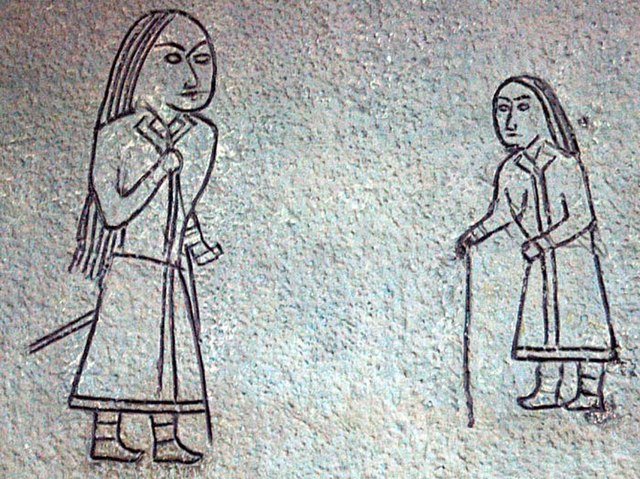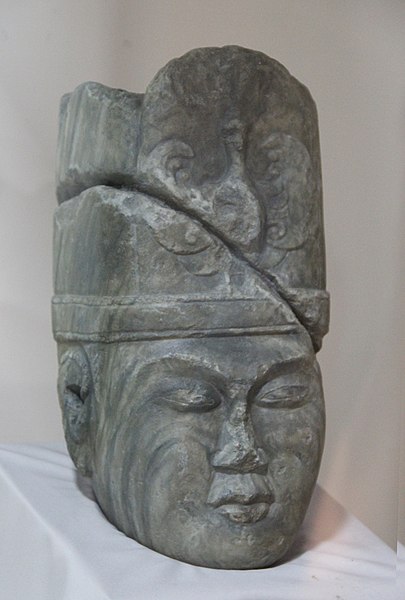The Shoroon Bumbagar tomb is an ancient tomb in Zaamar sum, Tov Province, 160 km west of Ulaanbaatar, Mongolia about 2.5 km north-east from the banks of the Tuul River and close to the 10th-century Khitan town of Khermen Denzh on the banks of the Tuul River. It was built for a Turkic nobleman between 650 and 700 CE.
Shoroon Bumbagar tomb mural, Göktürk, 7th century CE, Mongolia.
Shoroon Bumbagar tomb mural, Göktürk, 7th century CE, Mongolia.
Mural from the dromos of Shoroon Bumbagar, attendants in Chinese costume.
Mural from the dromos of Shoroon Bumbagar, attendants in Chinese costume.
The Göktürks, Türüks, Celestial Turks or Blue Turks, alternatively Great Turks or Root Turks were a nomadic confederation of Turkic peoples in medieval Inner Asia. The Göktürks, under the leadership of Bumin Qaghan and his sons, succeeded the Rouran Khaganate as the main power in the region and established the First Turkic Khaganate, one of several nomadic dynasties that would shape the future geolocation, culture, and dominant beliefs of Turkic peoples.
Gökturk petroglyphs from modern Mongolia (6th to 8th century).
A funerary depiction of long haired Türks in the Kazakh steppe. Miho funerary couch, circa 570.
Turkic horseman (Tomb of An Jia, 579 CE).
Bust of Kul Tigin (684–731) found in Khashaat, Arkhangai Province, Orkhon River valley. Located in the National Museum of Mongolia.








